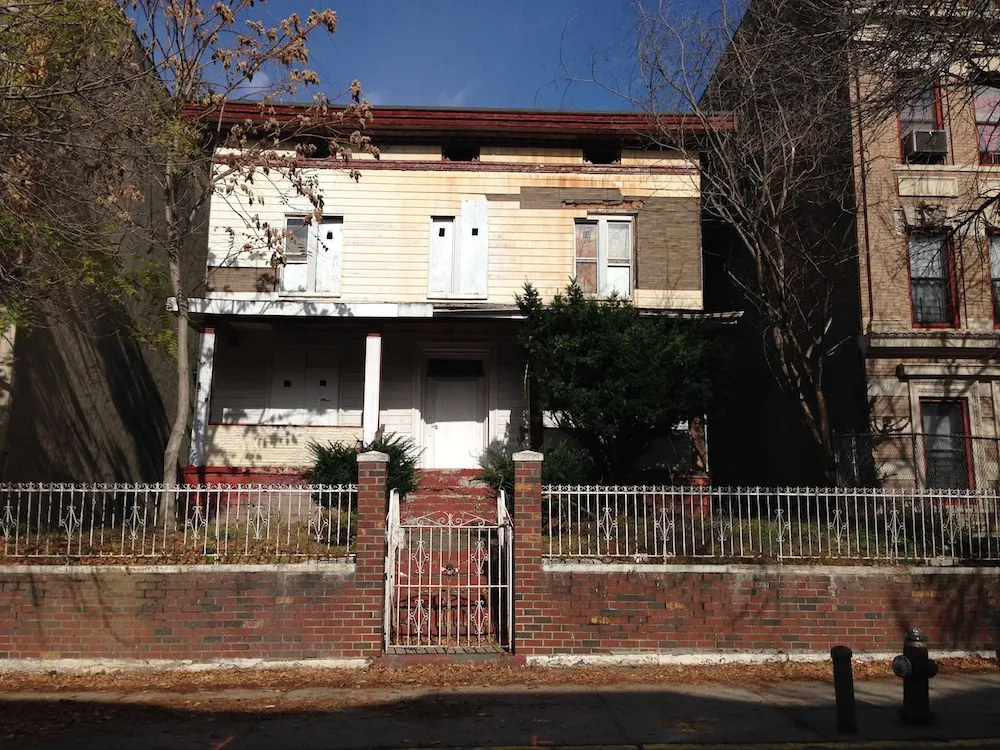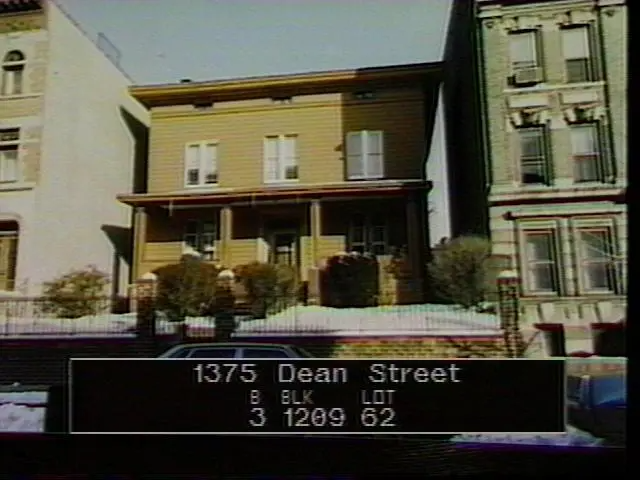Landmarks Rejects Proposal to Save Crown Heights' Oldest House
The Landmarks Preservation Commission Tuesday rejected a proposal to save Crown Heights’ oldest home, the badly deteriorated and individually landmarked Elkins House at 1375 Dean Street.

A rendering of the proposed restoration. Rendering via LPC
The Landmarks Preservation Commission Tuesday rejected a proposal to save Crown Heights’ oldest home, the badly deteriorated and individually landmarked Elkins House at 1375 Dean Street. The proposal would have turned the freestanding wood frame home — the only one dating from when the area was rural — into an attached row house with side extensions made of glass, destroying its unique character, The Brooklyn Eagle reported.
The owner of the house, Amber Mazor of Perfect Renovation, who has renovated other historic properties in the area, is caught between a rock and a hard place. For the project to be economically feasible, he must convert the house into at least four units, he told the LPC.

But modern city zoning requirements clash with Landmarks: Zoning rules say side yards must be at least eight feet wide — or there must be no side yards at all. And because Mazor is converting the number of units, he is required to adhere to current code.
“This house has no future as a two-family house,” the Eagle quoted Mazor as saying. “It is too big. It is too complicated.”
He also told the officials at the hearing: “I am at the end of my rope financially.”
But there is hope. Because of the Landmarks requirements, it’s likely Mazor can get a variance from the Board of Standards and Appeals, so he can leave the sides of the house unchanged. LPC Chair Meenakshi Srinivasan should know — she used to be head of the city agency. She instructed Mazor and architect Richard Goodstein of Crown Heights-based NC2 Architecture to request a variance from the board.
Presentation materials for the proposed renovation of the Elkins house can be seen on the LPC website. The house is a “transitional Greek Revival-Italianate freestanding house built circa 1855-69,” according to the LPC. The proposal is to create additions on the roof, in the side yards, and rear yard.
Mazor had initially planned to convert the property into five condos and restore the exterior to its 1939 tax photo condition, including the balcony, windows and doors, as we have reported.
The Elkins house has been deteriorating since the early 1980s, and it has been vandalized. The previous owner, Real Properties, paid $194,000 for it in 2011 and promised to restore the exterior and convert it to apartments. That never happened. Instead, the firm gutted what was left of the interior and was sanctioned by Community Board 8 for “demo by neglect” when gaping holes appeared in the roof. Then the firm put it on the market for $1,100,000.
Mazor bought it together with a property across the street at 1372 Dean Street under an LLC for $1,320,000 in 2013.
The Elkins house is “essentially a ruin right now,” architect Goodstein told Community Board 8 last year.
[Source: Eagle]

Related Stories
New Owner of Crown Heights’ Oldest House Plans Condos
Oldest House in Crown Heights North Now More Ruined and Expensive Than Ever
1375 Dean Street Coverage





I know the building very well. I saw it from the inside when it was on the market for almost a year! The brokers were desperate to sell it. It has gone through such neglect and its a shame that its now barely standing. The lot is huge and the house itself is enormous and it needed so much restoration work to satisfy Landmarks that we could not even consider it financially. Realistically I doubt that this house has any chance to survive as a single or two family home. Perheps in five years from now, but time is running out. It will be a shame to lose it….. Landmarks, get it together!
People , bsa will grant a waiver. Tha applicant had to have known this but probably didnt want to deal with it. Lpc is absolutely correct in pushing them to keep this house a freestanding wood house.
“For the project to be economically feasible”
It would be feasible if the previous owner was charged the cost of repairing what he demolished by neglect – it should have been taken out of the sale price.